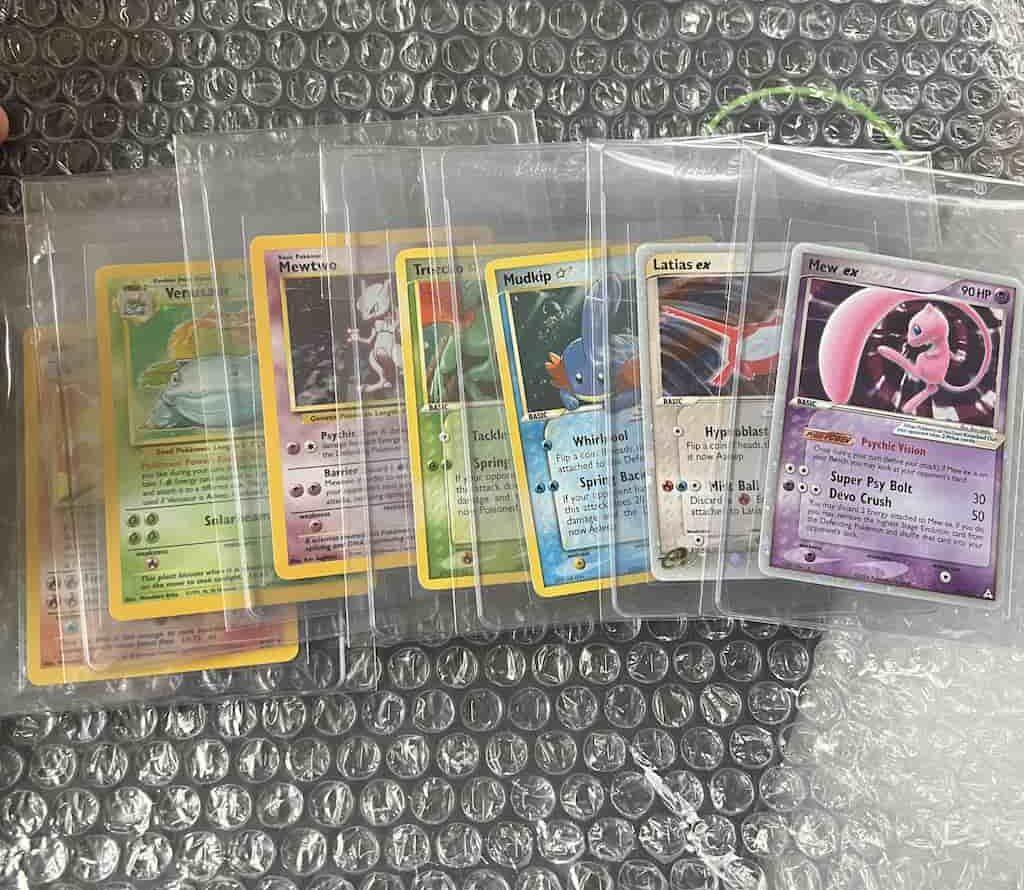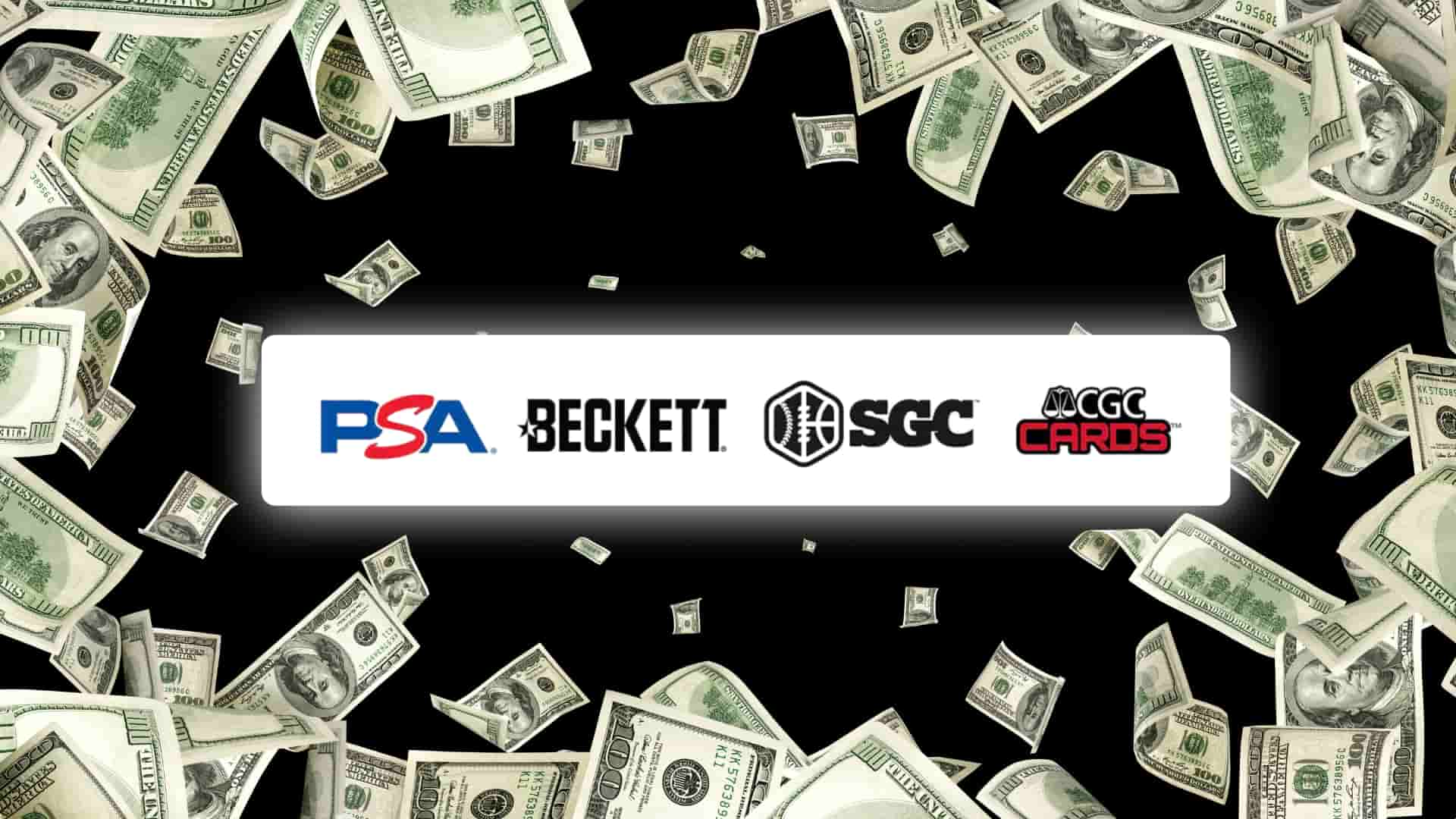You’ve spent years, maybe even decades, carefully curating a Pokémon card collection that would make Professor Oak himself shed a tear of pride. You’ve hunted for those elusive first editions, traded with fellow trainers, and maybe even pulled a Charizard that’s so sparkly it could blind a Zubat.
Your collection is more than just a stack of cardboard; it’s a treasure chest of memories, a testament to your dedication, and let’s be honest, a pretty hefty investment.
But what happens if the unthinkable occurs? What if a rogue wave (or a leaky pipe) turns your prized possessions into a pulpy mess? What if a real-life Team Rocket decides your collection is the perfect thing to nab? Without the right protection, you could be left with nothing but a Pokémon-sized hole in your heart and your wallet.
That’s where insurance comes in. Now, I know what you’re thinking. “Insurance? Isn’t that for boring adult stuff like cars and houses?” And you’re not wrong, but when your “boring adult stuff” includes a first-edition, PSA 10 Charizard, it’s time to start thinking like a grown-up Pokémon Master.
Is My Collection Even Worth Insuring?
This is the first question every collector asks, and it’s a valid one. Not every collection needs a dedicated insurance policy. If your collection consists mainly of common cards from recent sets, your standard home insurance might be enough to cover it. However, if you have any of the following, you should seriously consider getting specialized collectibles insurance:
- High-Value Cards: Do you have any cards worth a few hundred, or even a few thousand, pounds? A single high-value card, often called a chase card by enthusiasts, can be enough to justify getting a specialized policy.
- Graded Cards: If you have cards graded by a reputable company like PSA, Beckett, or CGC, you’ve already invested in their value. It’s a no-brainer to protect that investment.
- First-Edition or Shadowless Cards: These early prints are the holy grail for many collectors, and understanding what makes shadowless Pokémon cards so special is key to appreciating their value.
- Complete Sets: A complete set of a popular expansion, especially if you are trying to build a master set in Pokémon TCG, can be worth a small fortune.
- A Large Collection: Even if you don’t have any individual “big hitters,” a large collection of cards can add up to a significant amount of money.
If you’re still not sure, a good rule of thumb is this: If the thought of losing your collection in a fire or theft makes you feel physically ill, it’s probably time to get it insured.

Track Your TCG Collection
Create your free Card Codex account to monitor card prices, view real-time market trends, and analyse your portfolio’s growth.
Start Tracking Now — It’s FreeStep 1: Valuing Your Collection
Before you can insure your collection, you need to know what it’s worth. This is the most time-consuming part of the process, but it’s also the most important. An accurate valuation will ensure you get the right amount of coverage and that you’re not paying for more than you need.
Taking Inventory
The first step is to create a detailed inventory of your collection. This might seem like a daunting task, but it’s essential for both insurance purposes and your own peace of mind. There are many fantastic ways to sort and organize your Pokémon cards that can make this process much easier. Here’s what you should include for each card:
- Pokémon Name: This one’s easy!
- Set Name and Number: You can find this at the bottom of the card.
- Rarity: Is it a common, uncommon, rare, holo, or ultra-rare? Familiarizing yourself with the different Pokémon card rarities and symbols is crucial for this step.
- Condition: Be honest with yourself here. Is the card in mint condition, or has it seen a few battles? The specific Pokémon card conditions explained by grading companies can help you make an accurate assessment.
- Estimated Value: We’ll get to this in a minute.
You can use a simple spreadsheet to keep track of everything, or you can use a dedicated collection tracking app. These apps can be a lifesaver, as they often have built-in databases with card images and pricing information.
Determining the Value
Once you have your inventory, it’s time to start putting a price tag on your cards. There are many factors that determine what makes a Pokémon card valuable, from its rarity to its condition. Here are a few ways to figure it out:
- Online Marketplaces: Websites like TCGPlayer and eBay are your best friends when it comes to valuing your cards. You can search for individual cards and see what they’ve recently sold for. Be sure to look at the “sold” listings, not the “for sale” listings, as this will give you a more accurate idea of the card’s current market value.
- Price Guides: Websites like PriceCharting and CardMavin specialize in tracking the value of Pokémon cards. They aggregate data from various online marketplaces to give you an estimated value for your cards.
- Professional Grading: For your most valuable cards, it’s worth getting them professionally graded. Companies like PSA, Beckett, and CGC will authenticate your cards and assign them a grade from 1 to 10 based on their condition. A high grade can significantly increase the value of a card, and the “slab” (the protective case the graded card comes in) is a great way to protect it from damage.
- Professional Appraisal: For very large or valuable collections, you might want to consider getting a professional appraisal. A professional appraiser will be able to give you an accurate valuation of your entire collection, which can be invaluable for insurance purposes.
Step 2: Choosing Your Insurance Policy
Now that you know what your collection is worth, it’s time to find the right insurance policy. You have two main options:
Home Insurance
Your standard home insurance policy will likely provide some coverage for your collectibles, but it’s usually not enough for a valuable Pokémon card collection. Home insurance policies often have a low limit for single items, and they may not cover things like accidental damage or flood damage.
If your collection is worth more than a few thousand pounds, you’ll likely need to get a “rider” or a “floater” policy to add to your existing home insurance. This will increase your coverage for your collectibles, but it may still not be the best option.
Specialized Collectibles Insurance
For most serious collectors, specialized collectibles insurance is the way to go. These policies are specifically designed to protect valuable collections, and they offer a number of benefits over standard home insurance, including:
- Agreed Value Coverage: This is the most important feature to look for in a collectibles insurance policy. With agreed value coverage, you and the insurance company agree on the value of your collection when you take out the policy. If you ever need to make a claim, you’ll receive the full agreed-upon value, without any depreciation.
- All-Risk Coverage: Most collectibles insurance policies offer “all-risk” coverage, which means your collection is protected against a wide range of perils, including theft, fire, flood, accidental damage, and even mysterious disappearance.
- Low or No Deductible: Many collectibles insurance policies have a low or even a zero-pound deductible, which means you won’t have to pay anything out of pocket if you need to make a claim.
- Inflation Protection: Some policies offer inflation protection, which automatically increases the value of your collection to keep up with inflation.
- Coverage for New Acquisitions: If you’re an active collector, you’ll want a policy that covers your new acquisitions. Many policies will automatically cover new additions to your collection up to a certain percentage of your total coverage.
Step 3: Finding Your Insurance Provider
Once you’ve decided on the type of insurance you need, it’s time to find an insurance provider. There are a number of companies that specialize in collectibles insurance, including Collectibles Insurance Services (CIS), American Collectors Insurance, Assetsure, and Towergate.
When you’re comparing policies, be sure to look at the coverage options, the deductible, and the annual premium. You can expect to pay between 1% and 2% of your collection’s value in annual premiums. So, if your collection is worth £10,000, you can expect to pay between £100 and £200 per year for insurance.
Step 4: Protecting Your Collection
Insuring your collection is only half the battle. You also need to take steps to protect your cards from damage and theft. Here are a few tips:
- Sleeves and Binders: The first line of defense for your cards is a good set of sleeves and a high-quality binder. Use acid-free, non-PVC sleeves and binders with D-rings to prevent your cards from getting warped.
- Toploaders and Card Savers: For your most valuable cards, use rigid toploaders or semi-rigid card savers for an extra layer of protection.
- Climate Control: Store your cards in a cool, dry place, away from direct sunlight. Extreme temperatures and humidity can cause your cards to warp and fade.
- Security: If you have a particularly valuable collection, consider storing it in a safe or a bank vault. You should also take steps to improve your home security, such as installing a burglar alarm and security cameras.
Step 5: Making a Claim
Hopefully, you’ll never have to make a claim on your insurance policy. But if you do, here’s what you need to do:
- Contact the Police: If your collection is stolen, the first thing you should do is file a police report.
- Document the Loss: Take photos of any damage or evidence of theft.
- Contact Your Insurance Provider: Contact your insurance company as soon as possible to start the claims process.
- Provide Documentation: You’ll need to provide your insurance company with your inventory, photos of your collection, and any receipts or other proof of ownership.
The Final Word
Your Pokémon card collection is more than just a hobby; it’s a passion. It’s a source of joy, nostalgia, and, yes, even a little bit of financial security. By taking the time to properly value and insure your collection, you can protect your investment and ensure that your cards will be around for years to come.
So, don’t be a Slowpoke! Get your collection appraised, find the right insurance policy, and take the necessary steps to protect your cards. That way, you can continue to enjoy your collection with the peace of mind that comes with knowing it’s protected. After all, a true Pokémon Master is always prepared!







